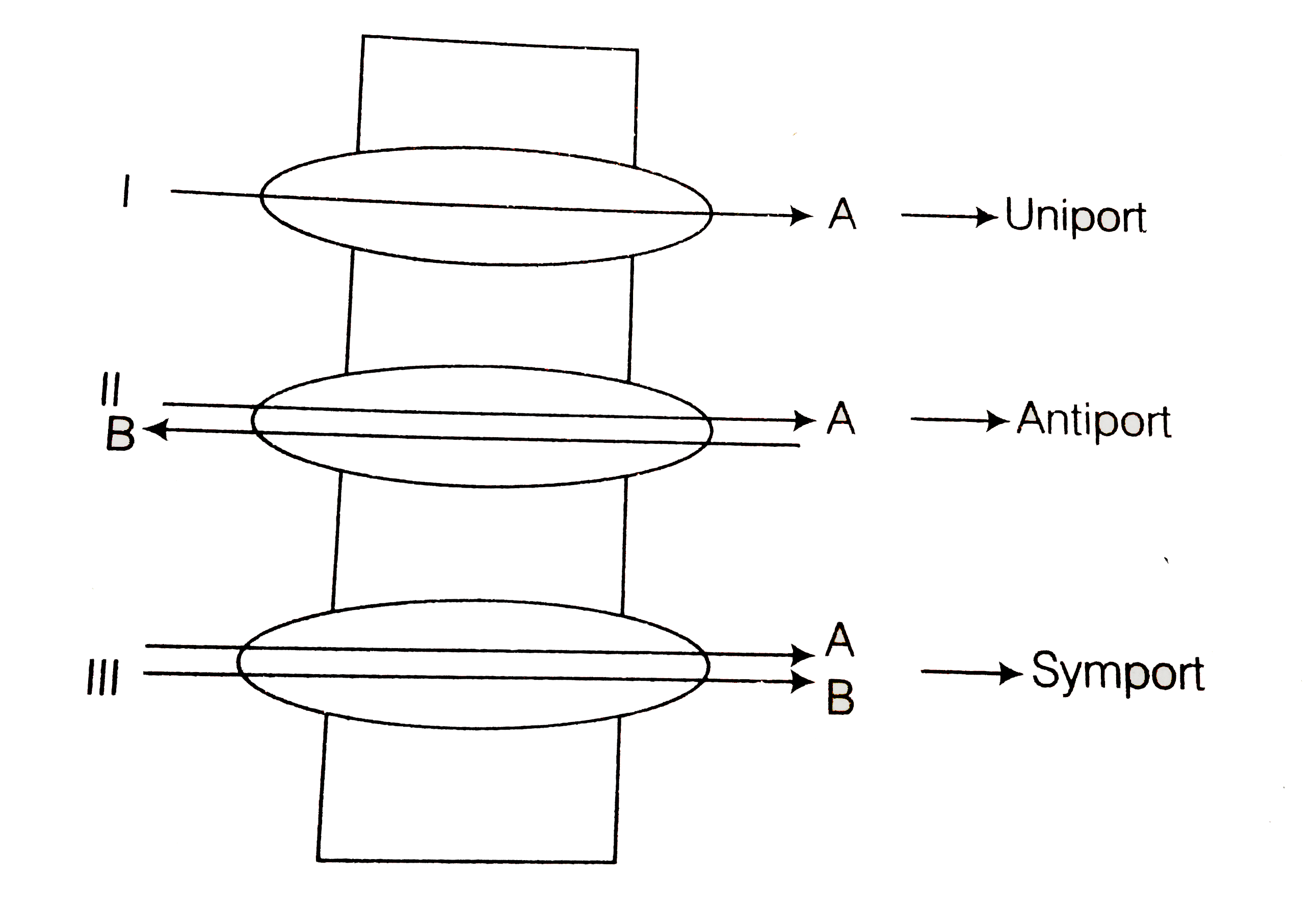In passive transport across a membrane, when two protein molecules move in opposite direction it is called as
uniport
antiport
symport
co-port.
The correct Answer is:B
To solve the question regarding passive transport across a membrane, we need to understand the different types of transport mechanisms that can occur. Here’s a step-by-step breakdown of the solution:
Step 1: Understand Passive Transport
Passive transport is a process where molecules move across a membrane without the use of energy (ATP). This movement occurs along the concentration gradient, meaning substances move from an area of higher concentration to an area of lower concentration.
Hint: Remember that passive transport does not require energy input.
Step 2: Identify Types of Transport
There are different types of transport mechanisms:
- Uniport: Movement of a single type of molecule in one direction.
- Symport: Movement of two different molecules in the same direction.
- Antiport: Movement of two different molecules in opposite directions.
Hint: Think about the direction of movement for the molecules to differentiate between uniport, symport, and antiport.
Step 3: Analyze the Question
The question specifically asks about the scenario where two protein molecules move in opposite directions across a membrane.
Hint: Focus on the terms "opposite direction" to narrow down the options.
Step 4: Match the Definition to the Options
From the definitions:
- Uniprot: Not applicable as it involves only one molecule.
- Symport: Not applicable as it involves movement in the same direction.
- Antiprot: This matches our requirement of two molecules moving in opposite directions.
- Copot: This is not a standard term used in transport mechanisms.
Hint: Eliminate options that do not match the criteria given in the question.
Step 5: Conclusion
Based on the analysis, when two protein molecules move in opposite directions across a membrane, it is referred to as antiport.
Final Answer: The correct answer is option 2: antiport.
Passive transport is a process where molecules move across a membrane without the use of energy (ATP). This movement occurs along the concentration gradient, meaning substances move from an area of higher concentration to an area of lower concentration.
There are different types of transport mechanisms:
- Uniport: Movement of a single type of molecule in one direction.
- Symport: Movement of two different molecules in the same direction.
- Antiport: Movement of two different molecules in opposite directions.
The question specifically asks about the scenario where two protein molecules move in opposite directions across a membrane.
From the definitions:
- Uniprot: Not applicable as it involves only one molecule.
- Symport: Not applicable as it involves movement in the same direction.
- Antiprot: This matches our requirement of two molecules moving in opposite directions.
- Copot: This is not a standard term used in transport mechanisms.
Based on the analysis, when two protein molecules move in opposite directions across a membrane, it is referred to as antiport.
Topper's Solved these Questions
- BOOK - NCERT FINGERTPS ENGLISHCHAPTER - TRANSPORT IN PLANTSEXERCISE - Plant- Water Relations46videos
TRANSPORT IN PLANTS
- BOOK - NCERT FINGERTPS ENGLISHCHAPTER - TRANSPORT IN PLANTSEXERCISE - Long Distance Transport of Water12videos
TRANSPORT IN PLANTS
- BOOK - NCERT FINGERTPS ENGLISHCHAPTER - THE LIVING WORLDEXERCISE - The Living World130videos
THE LIVING WORLD
Similar Questions
Knowledge Check
- Question 1 - Select One
When transport proteins simultaneously move two molecules across a membrane in the same direction ,the process is called
AuniportBantiportCsymportDdiffusive port.
Enzyme facilitating transport across the membrane is
View SolutionHow do neutral solutes move across the plasma membrane? Can the polar molecules also move across it in the same way? If not, then how are these transported across the membrane?
View SolutionTransport of RNA and protein molecules in between nucleus and cytoplasm in both directions is facilitated by
View SolutionThe ability of protein to move within the membrane is measured as its:
View SolutionDiffusion occurs when molecules move :
View SolutionThe carrier - mediated cotransport in which a solute is actively transported across a membrane against the gradient of electrochemical potential by coupling the uphill transport of one solute to the downhill transport of another in an example of
View SolutionMovement of a molecule across a membrane independent of other molecules is known as –
View Solution


